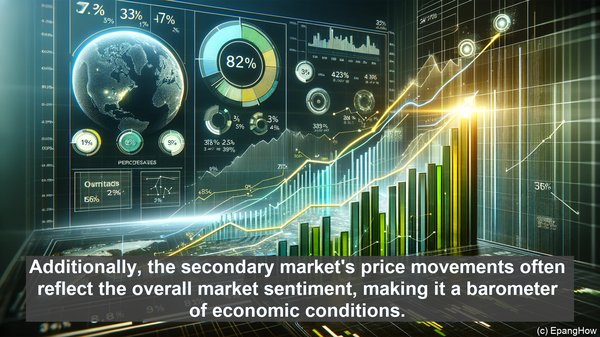Introduction: The Financial Ecosystem
Greetings, financial enthusiasts! Before we dive into the primary and secondary markets, let’s understand the broader financial ecosystem. At its core, finance revolves around the flow of capital, enabling businesses to thrive and economies to grow. Within this ecosystem, the primary and secondary markets emerge as key players, each with its unique role and purpose.
Primary Market: The Birthplace of Securities
The primary market, often referred to as the ‘new issue market,’ is where securities are first offered to the public. This is where companies, governments, or other entities raise capital for various purposes, such as expanding operations, funding projects, or paying off debts. In the primary market, the securities are sold directly by the issuer, and the proceeds go to the issuer. Examples of primary market transactions include initial public offerings (IPOs) and bond issuances.
Secondary Market: The Realm of Trading
Contrastingly, the secondary market is where already-issued securities are bought and sold among investors. Unlike the primary market, where the issuer receives the proceeds, in the secondary market, the buying and selling of securities occur between investors, with the issuer not directly involved. This market serves two primary functions: providing liquidity to investors, allowing them to easily convert their investments into cash, and facilitating price discovery, as the market forces of supply and demand determine the securities’ value.
Key Players and Instruments
To comprehend the functioning of these markets, it’s essential to be familiar with the key players and instruments. In the primary market, the primary participants are the issuer, who offers the securities, and the investors, who purchase them. The instruments in the primary market include stocks, bonds, and other securities. In the secondary market, the key players are the buyers and sellers, who can be individual investors, institutional investors, or even market makers. The instruments traded in the secondary market are typically those issued in the primary market, such as company stocks or government bonds.

Market Dynamics: Time and Pricing
Another crucial distinction between the primary and secondary markets lies in their dynamics. In the primary market, the transactions occur during the initial offering of securities, often within a limited time frame. The pricing in the primary market is typically determined through negotiations between the issuer and the investors, with factors like the company’s financials, market conditions, and investor demand influencing the price. In the secondary market, however, the trading is ongoing, and the prices are determined by the market forces, with factors like supply, demand, and investor sentiment shaping the securities’ value.
Importance and Impact
Both the primary and secondary markets are vital cogs in the financial machinery, and their significance extends beyond the realm of trading. The primary market acts as a crucial avenue for entities to raise capital, enabling them to pursue growth opportunities. It also provides investment opportunities to the public, allowing individuals and institutions to participate in the growth of companies or the development of infrastructure. The secondary market, on the other hand, ensures liquidity, instilling confidence in investors, and facilitating the efficient allocation of capital. Additionally, the secondary market’s price movements often reflect the overall market sentiment, making it a barometer of economic conditions.

